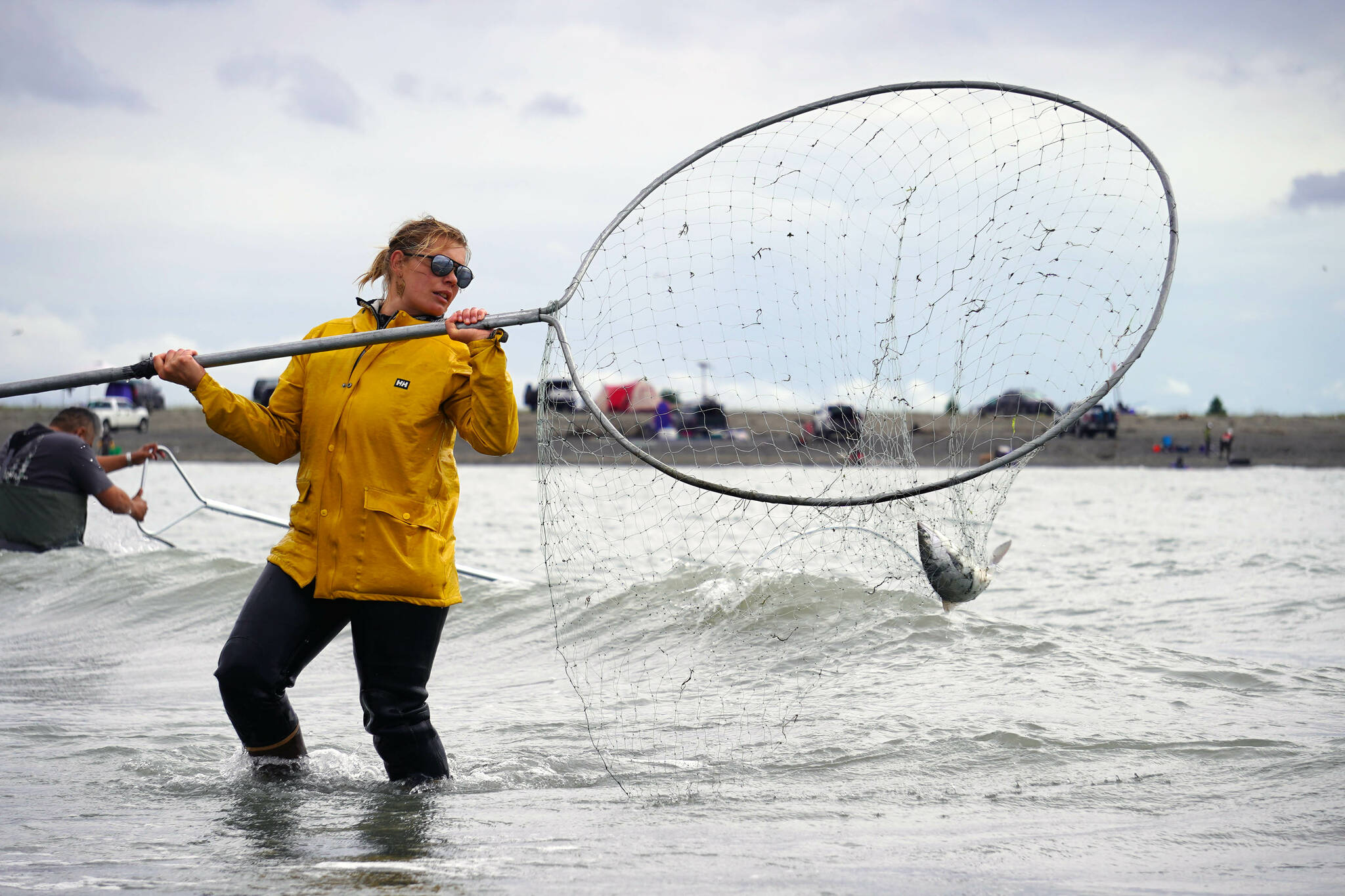The Kenai River’s personal use dipnet fishery is open 24 hours a day until the fishery closes at midnight on July 31.
A release from the State Department of Fish and Game on Wednesday said that the liberalization of fishing regulation was effective starting Thursday evening. The area of the Kenai River open to personal use dipnetting remains the same.
According to the release, the department is able to increase the open hours for dipnetting when they project a Kenai River late-run of sockeye that exceeds 2.3 million fish, exceeding the escapement goal of 750,000-1.3 million for the species.
Since the late run began to be counted on July 1, according to fish counts available from the department, 405,000 sockeye have been counted by sonar, outpacing each of the last four years. Since dipnetting opened on July 10, between 19,000 and 34,000 sockeye have been counted on the Kenai each day.
On Wednesday, at the peak of the tide, hundreds of fishers stood either on the beach or in the waves at the mouth of the river. At any moment, dozens of sockeye salmon could be seen being dragged up on the sand, having their tailfins clipped, or being deposited into one of an array of buckets and coolers.
Only Alaska residents can participate in a personal use fishery. Any angler 18 years old or older must possess a valid sport fishing license. A permit, which is effective for an entire household, must also be acquired before fishing. The department says permits can be obtained from private vendors or at department offices — like the Fish and Game office in Soldotna. A list of private vendors can be found on the department website.
Viewed on the department’s online store, a sport fishing license costs $20, while the Upper Cook Inlet Personal Use Salmon Permit is free.
On the permit, the date, location and harvest by species must be filled in each time an angler fishes — even if no fish are caught. All reporting must be submitted via the department’s harvest reporting webpage by Aug. 15, even if the permit was left unused or if no fish were caught for the season. Failure to report by the deadline will result in the loss of personal use fishing privilege in the next year, the department says.
The bag limit for Upper Cook Inlet personal use salmon fisheries — which include not just the Kenai but also the Kasilof River and Fish Creek — is 25 salmon and 10 flounder for the holder and 10 additional salmon for each additional household member. Each caught salmon must be “marked” by clipping both ends of the tail fin using scissors or shears. Marking must be done “before the salmon is concealed from plain view” or the angler may be subject to fines.
King salmon may not be retained, and must immediately be returned to the water. In the Kenai River’s late run of king salmon, only 1,489 have been counted since July 1, far below the escapement goal for the species of 15,000-30,000.
Dipnetting on the Kenai River is allowed from the shore at the mouth of the Kenai River, extending north and south into Cook Inlet to commercial fishing markers and upstream to a line from No Name Creek. Anglers can also dipnet from the shore on the south bank between the Kenai Landing Dock to the downstream edge of the Warren Ames Bridge.
Dipnetting from a boat is also allowed between department markers near the Kenai City Dock upstream to the downstream edge of Warren Ames Bridge, with the same requirements for permitting, limits and marking. The department notes that there are no nearby public boat launches — the closest is upstream of the Sterling Highway bridge.
More information about fishing regulations and availability can be found at adfg.alaska.gov.
Reach reporter Jake Dye at jacob.dye@peninsulaclarion.com.

